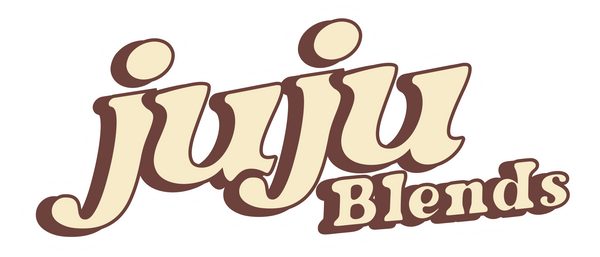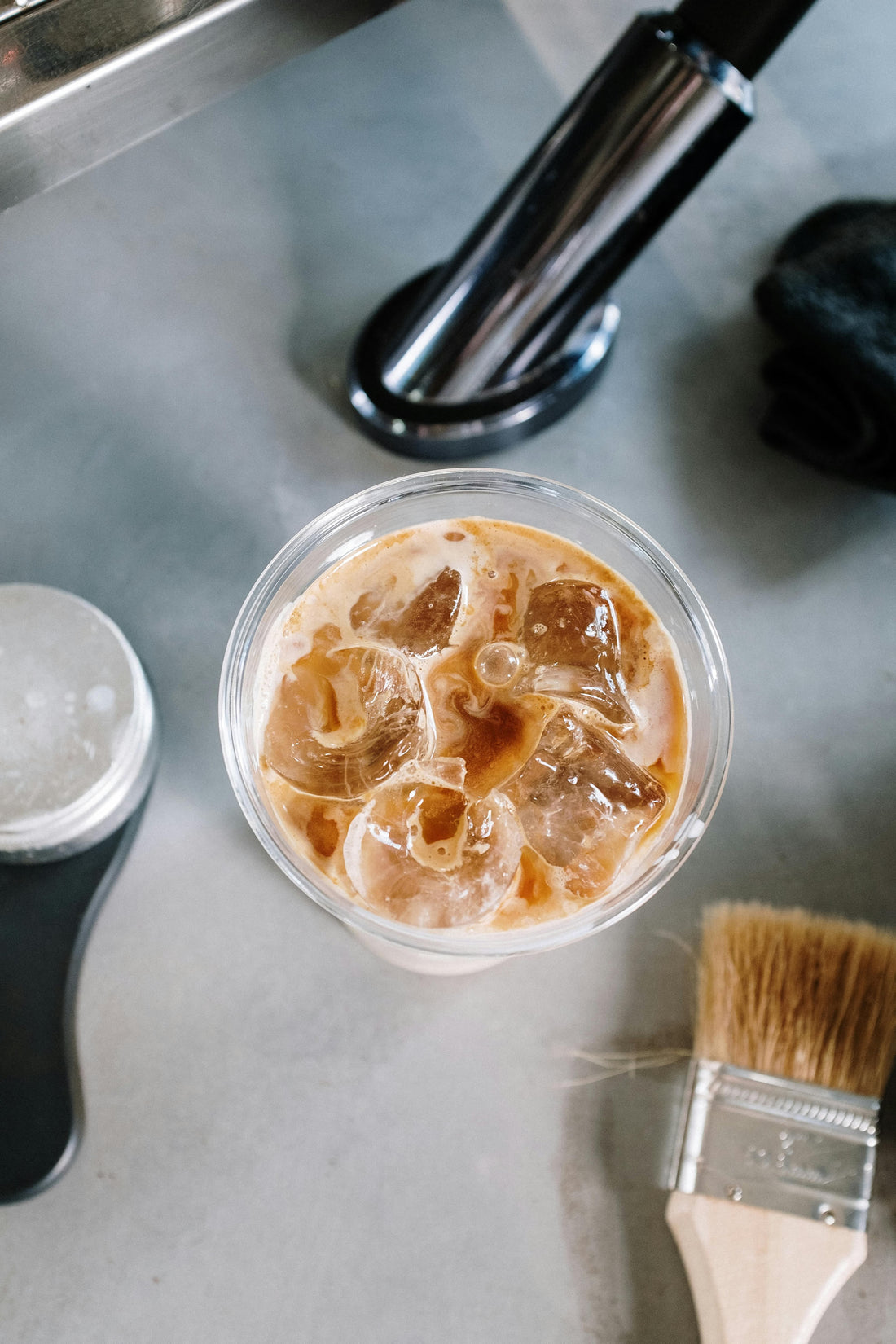Is there anything more invigorating than a chilled latte? This espresso drink's enormous popularity is not surprising. An exquisite delight is the combination of bitter coffee, delicate sweetness, and frothed milk. This one is so simple to make at home that you won't even need to visit your go-to coffee shop. Nothing beats this on summer afternoons (or any time, in our opinion).
/ IN THIS ARTICLE
02. Key Components
03. Ingredients For Iced Latte
04. So, how to make an iced latte?
06. Barista Milk Frothing Techniques
07. Ways to Sweeten Your Iced Latte (The Healthier Way)
08. Foods To Pair With Iced Latte
09. Iced Coffee Mistakes You Could Be Making—Plus What to Do Instead
10. Frequently Asked Questions
11. Conclusion
What is an Iced Latte?
The iced latte is a chilled variation on the classic latte that features ice, cold milk, and an espresso shot. The iced latte would not be complete without an espresso machine, as the espresso is a key ingredient.
Pour espresso over ice and top with frothed milk to make an iced latte. If you want to spice up your iced latte recipe, you can make it at home and add flavoring syrup to taste.
Espresso, chilled milk, simple syrup, and ice are the ingredients for an iced latte, a refreshing cold coffee drink. A few other names for it include "latte on the rocks" and "cafè latte iced." The standard serving glass for this beverage is a tall 16 ounce glass. Thanks to the two shots of espresso used to make the iced latte, its flavor is stronger than that of ordinary coffee. The bitterness of the coffee is muted by the milk, which also gives the drink a velvety texture. On days when a hot cup of coffee would be too hot to drink, this beverage is a great substitute.
Fortunately, an iced latte doesn't require a trip to the café. Making one at home is easy and requires only a few simple ingredients. This blog will teach you the ropes.
Key Components
Espresso
Lattes, whether served hot or cold, rely on espresso as their main ingredient. In a typical latte, you'll find one or two shots of espresso, which add a robust coffee flavor and really make the drink shine. The coffee is brewed by passing hot water through finely ground beans, which intensifies their flavor.
Milk
Whether you prefer your lattes hot or cold, milk is an essential component. The espresso in a hot latte is given a velvety mouthfeel and richer flavor by the addition of steaming milk. The general flavor and intensity of the beverage are affected by the coffee-to-milk ratio, which can be altered by adjusting the quantity of milk added. In contrast, iced lattes are made by combining espresso with cold milk and ice. The consistency of the drink is greatly affected by the temperature difference of the milk; iced lattes are lighter in texture compared to hot lattes.
Sweeteners and Syrups
Sweeteners and flavor syrups allow many to personalize their lattes. Syrups are often sweetened with sugar, honey, or artificial sweeteners; popular flavors include caramel, hazelnut, and vanilla. You can change the drink's flavor and calorie count by adding these ingredients. Incorporating syrups or sweeteners should be done moderately so that the flavor profile remains balanced and calories are not excessively consumed.
Ingredients For Iced Latte
- 1/2 cup instant coffee granules
- 1/2 cup boiling water
- 4 cups chocolate milk
- 2 cups cold water
- 1 can (14 ounces) sweetened condensed milk
- Ice cubes
So, how to make an iced latte?
STEP 01
Pour the freshly made espresso into a tall glass that has been filled with ice.
STEP 02
Fill a mason jar three quarters of the way to the top with milk and any optional sweetener.
STEP 03
Shake thoroughly after sealing the jar.
STEP 04
In a glass filled with ice and espresso, pour the milk and foam.
Flavors of Iced Lattes
Iced Spanish latte
One simple and tasty way to stay cool in the summer is with an iced Spanish latte.
It is an old-fashioned coffee beverage with a long history. A velvety blend of espresso, sugar syrup, or condensed milk floats atop ice cubes in this luscious drink!
Iced strawberry latte
If you're a coffee connoisseur in search of a sweet and revitalizing beverage, go no further than an iced strawberry latte.
Delicious ice cubes, strawberry sauce, whipped cream, milk of your choice, and strong espresso coffee make up this drink.
The end product is an iced coffee that is both flavorful and refreshing—just what you need on a steamy summer day!
Iced oat milk latte
Oat milk has recently surpassed cow's milk in popularity as a substitute for cow's milk due to its nutty flavor and creamy texture. This non-dairy milk is now making its way into iced oat milk lattes.
These invigorating beverages can be sweetened or left unsweetened according to your preference; they consist of espresso coffee, oat milk, and ice.
Iced vanilla latte
Iced vanilla lattes are the quintessential summer drink.
It could be the sweet vanilla syrup or the icy spin on traditional iced coffee, but either way, it's the ideal summertime pick-me-up.
Iced caramel latte
A delightful and invigorating beverage, the iced caramel latte is prepared with two shots of espresso, milk of your choice, homemade caramel sauce, and a dollop of whipped cream on top.
Iced mocha latte
An iced mocha latte is a variation on the classic espresso latte that combines a chocolate sauce, a splash of milk, and a sweet mocha syrup. Whipped cream adds a velvety finish to the drink.
Cold brew latte
Coffee that has been cold brewed is used to make a cold brew latte. Cold brew coffee takes significantly longer and uses significantly less heat than its hot counterpart.
Brewing the coffee for an extended period of time allows all the flavors to be extracted, making the resulting concentrate more caffeinated than iced coffee.
To top it all off, there are plenty of ice cubes and cold foam for a refreshing touch!
Iced white chocolate latte
To perk up and power through the day, have a caffeinated iced white chocolate latte.
The recipe calls for whole milk, espresso, whipped cream, ice, and white chocolate sauce. Flavorful, creamy, and sweet.
Barista Milk Frothing Techniques
Handheld frothier
A portable milk frothier is simple to operate and produces airy foam. The best way to froth dairy milk is to bring it to a rolling boil, transfer it to a tall container, and then whip it at an angle. The ideal way to get foam in your drink is to raise and lower the frothier for twenty to thirty seconds. When making oat milk, a handheld frothier will work just as well. After 30 seconds of frothing the cold oat milk, heat it over medium heat for 10 minutes, stirring constantly, for the best results.
Food processor/blender
When you need frothed milk for several drinks, a simple way to do it is to use a blender or food processor. Once you've set your preferred appliance to its highest speed, add the cold milk and allow it to start aerating. Pour the thickened milk into a microwave-safe bowl and heat it for your beverages once it has doubled in size, which is usually about 20 minutes. The optimal amount of milk to use is just enough to make two drinks at a time.
When you need frothed milk for more than one drink, a food processor or blender is a convenient tool to have on hand. Once you've set your preferred appliance to its highest speed, add the cold milk and allow it to start aerating. Pour the thickened milk into a microwave-safe bowl and heat it for your beverages once it has doubled in size, which is usually about 20 minutes. The optimal amount of milk to use is just enough to make two drinks at a time.
French press
A French press can also produce foam, though it's slower than other methods. To start frothing milk, whether it's dairy or plant-based, bring it to a high temperature in the microwave or on the stove. Make sure there's enough space in the French press when adding milk to make foam. After ten to fifteen seconds of pumping by hand, you can see whether the foam has formed. Allow the milk to sit for approximately one minute prior to adding it to your drink for optimal results.
Espresso machine steam wand
To make frothed milk, simply use the steam wand that comes with an espresso machine. It takes some practice to get the foam consistency you want when using the steam wand, the traditional method for frothing milk in coffee shops. Once the container is approximately one-third full of cold milk, insert the steam wand and start steaming just below the milk surface. A silky froth will be created by the steam from the wand.
Ways to Sweeten Your Iced Latte (The Healthier Way)
- Cinnamon
Add this sugary spice to your iced coffee after it's brewed, or, if you prefer to make your own at home, toss the cinnamon into the coffee grounds. To make your own flavored coffee without sugar, just mix 1 tablespoon of cinnamon with 4 tablespoons of coffee grounds.
- Unsweetened Cocoa Powder
If you share my passion for chocolate, then you will adore this delicious hack. Instead of using sugary hot chocolate mix or sweetened chocolate syrup, try using some unsweetened cocoa powder. You can either pre-brew your coffee with 1 tablespoon for every cup of grounds, or stir it into your brewed coffee, espresso, or latte just like cinnamon. As an extra perk, you can boost your coffee's antioxidant and fiber content with just one tablespoon of cocoa powder.
- Extracts
One way to flavor foods and beverages without adding sugar is with a few drops of a naturally sweet extract. If you prefer your iced coffee without sugar, try adding a few drops of pure almond, hazelnut, vanilla, or vanilla extract.
- Unsweetened Vanilla Almond or Soy Milk
Unsweetened vanilla almond and soy milks are available, though many of the non-dairy milks with vanilla flavor have sugar added. These beverages can add a touch of sweetness to your iced coffee without adding sugar.
- Coconut Milk
If you're looking to add a hint of coconut flavor to your morning iced coffee, try this non-dairy milk. A homemade coffee creamer (free of sugar and additives) can be made by mixing it with a small amount of vanilla extract.
- Coconut Cream
To your ordinary iced coffee, this cream—made from a can of full-fat coconut milk—adds a hint of sweetness and a velvety texture. It makes a great beverage when combined with cinnamon.
Foods To Pair With Iced Latte
French Toast
A chai or mocha latte goes nicely with traditional French toast, a gourmet version with salted caramel, pecans, or berry mascarpone.
Tiramisu
Naturally, a cup of mud goes well with this traditional Italian dessert because it calls for coffee. A shot of espresso or a mocha latte enhances the already decadent flavor of tiramisu.
Utter Croissant
The buttery, flaky layers of croissants are delicious on their own, but when they're dipped in coffee, they're pure heaven. Absolutely mouthwatering! The croissant's natural sweetness is enhanced by the coffee. With your next mug of coffee, give it a try dipped!
Oatmeal Cookies
Sure, it's a nutritious cookie, so you can have a little mud in your cup every now and then. Oatmeal cookies are the ideal complement to a macchiato coffee due to their mild flavor.
Eggs And Ham
A cup of red eye coffee was made for an egg and ham breakfast or brunch.
Iced Coffee Mistakes You Could Be Making—Plus What to Do Instead
You’re buying ground coffee.
The flavor of your coffee will be much improved if you grind the beans just before brewing.
However, please do not grind your coffee using a blender or an old spice grinder. The blades (or stainless-steel burrs) of a coffee bean burr grinder produce a considerably more consistent grind, leading to a more flavorful cup of joe.
You’re not storing beans correctly.
Avoid storing your beans in clear containers, seal them tightly to keep in air, and keep them in a dark, room-temperature place to extend their freshness. We advise only purchasing the quantity of coffee that your household will consume within a one to two week period to avoid wastage or expired coffee. The freshness of your beans will decrease as soon as they are exposed to air. You can expect a gradual decline in quality as the time it takes to consume your beans increases. Because pre-ground coffee is subjected to more oxygen, this is particularly the case.
Your coffee-to-water ratio is off.
Using the correct ratio is crucial for making delicious iced coffee. According to Milos, the average person drinks far more coffee than is necessary. When brewing coffee at home, the general rule of thumb is to use 50-60 grams of coffee for every liter of water. Personalize it according to your preferences.
You’re just putting hot coffee in the fridge.
Even though it might be more convenient to make a large pot of coffee on Sunday and store it in the fridge for "iced" coffee during the week. When coffee is refrigerated, the oxidation process speeds up and continues for a long time, ruining the coffee's aroma-harboring oils and causing the acidity to rise rapidly. Ground coffee's ideal aromatics and flavors are extracted in hot water, creating intriguing tasting notes that immediately blossom on the palate. Then, the coffee is cooled down and its flavor is locked in by contacting it with ice.
You could be using the wrong type of water or ice (seriously).
You likely haven't given much consideration to the water you use to brew your coffee, as the majority of people do. Using high-quality water is essential because it makes up as much as 99 percent of your coffee, depending on the method of extraction.
Tolerating tap water as long as it is flavorful and chlorine-free is fine. Unless the water is rich in minerals, filtered water is preferable. The ideal water is spring water, also known as bottled water, unless it has a strong mineral taste and is slightly salty.
Iced Latte Tips
Creating an advanced iced latte that stands out requires a blend of barista expertise, creativity, and attention to detail. Here are some advanced techniques and secrets from professional baristas to elevate your iced latte experience:
- Quality of Coffee Beans: The foundation of an exceptional iced latte is the quality of the coffee beans. Opt for single-origin beans with a distinct flavor profile. Light to medium roasts are ideal as they retain the unique characteristics of the beans, which are more pronounced in iced lattes.
- Cold Brew Concentrate: Instead of using regular espresso, consider a cold brew concentrate. This method involves steeping coarsely ground coffee in cold water for an extended period (12-24 hours). The result is a smoother, less acidic concentrate that blends seamlessly with milk, creating a richer iced latte.
- Milk Selection and Treatment: The choice of milk significantly impacts the texture and taste. Full-fat milk provides a creamier texture, while alternatives like almond or oat milk offer unique flavors. For an extra silky texture, baristas often use a technique called 'stretching' where the milk is slightly warmed and aerated before being cooled again. This process creates a microfoam that integrates beautifully with the coffee.
- Layering Techniques: Mastering the art of layering can create a visually stunning iced latte. Carefully pour the milk over an inverted spoon to create distinct layers of milk and coffee. This not only looks impressive but also allows the drinker to experience the gradual blend of flavors.
- Custom Ice Cubes: Instead of regular ice cubes, use coffee ice cubes made from leftover coffee or the same blend used in the latte. This prevents the drink from becoming diluted as the ice melts, maintaining the strong coffee flavor.
- Flavor Infusions: Experiment with infusing your milk with flavors like vanilla, cinnamon, or lavender. This can be done by steeping these ingredients in warm milk and then cooling it down. These subtle infusions add a unique twist to the classic iced latte.
- Garnishing and Presentation: The final touch is in the presentation. Use a chilled, clear glass to showcase the layers. Garnish with a sprinkle of cocoa powder, a cinnamon stick, or even edible flowers for an Instagram-worthy appearance.
- Temperature Control: Keeping all ingredients chilled until serving is crucial. This includes the glass, milk, and even the espresso or cold brew concentrate. Temperature control ensures a refreshing and crisp taste from the first sip to the last.
- Sweetener Syrups: Offer a variety of homemade sweetener syrups like classic simple syrup, caramel, or hazelnut. These can be drizzled over the top or mixed in to add a personalized sweetness level.
- Continuous Learning and Experimentation: Finally, the true secret of a skilled barista is the willingness to continuously learn and experiment. Stay updated with the latest trends, experiment with new techniques, and always seek feedback to refine your craft.
By incorporating these advanced techniques and barista secrets, you can transform a simple iced latte into a gourmet experience that delights the senses and showcases your skill and creativity.
Frequently Asked Questions
How Can I Make My Iced Latte Frothier?
To make your iced latte frothier, focus on the milk. Use cold, fresh milk, preferably whole milk for better froth. You can froth the milk using a milk frothier, a French press, or even a jar. Shake or pump vigorously to incorporate air, creating a creamy, frothy texture. Chill the frothed milk before adding it to your iced latte to maintain its consistency.
What Is The Best Coffee To Use For An Iced Latte?
The best coffee for an iced latte is typically a strong, richly flavored coffee. Medium to dark roast beans are ideal, as they provide a robust flavor that can stand up to the dilution caused by ice. Espresso is commonly used due to its concentrated flavor, but a strongly brewed coffee can also work well. The choice of beans can vary based on personal preference, with some opting for single-origin beans for unique flavors.
How Do I Prevent My Iced Latte From Becoming Watery?
To prevent your iced latte from becoming watery, start with making a stronger coffee or espresso base. This compensates for the dilution from the melting ice. Use less ice, or freeze some coffee in an ice cube tray and use these coffee ice cubes instead of regular ice. Additionally, chilling all the components (coffee, milk, and glass) before assembling can help reduce the rate at which the ice melts.
Can I Make An Iced Latte Without An Espresso Machine?
Yes, you can make an iced latte without an espresso machine. Use a strong brew from a regular coffee maker, a French press, or even instant coffee as a substitute. The key is to ensure the coffee is strong enough to mimic the intensity of espresso. Once you have your coffee base, simply add cold milk and ice to complete your iced latte.
Is There A Difference In Taste Between A Hot Latte And An Iced Latte?
Yes, there is a difference in taste between a hot latte and an iced latte. The primary difference comes from the temperature, which affects the perception of taste. Hot lattes tend to have a more pronounced coffee flavor, with the warmth enhancing the aroma and depth of the coffee. Iced lattes, on the other hand, are more refreshing and can have a slightly muted coffee flavor due to the cold temperature and dilution from the ice. The texture also differs, with iced lattes being more crisp and hot lattes being creamier.
Conclusion
Now that you already know the how to make an Iced Latte, you can now enjoy your favorite drink in the comfort of your own home.




